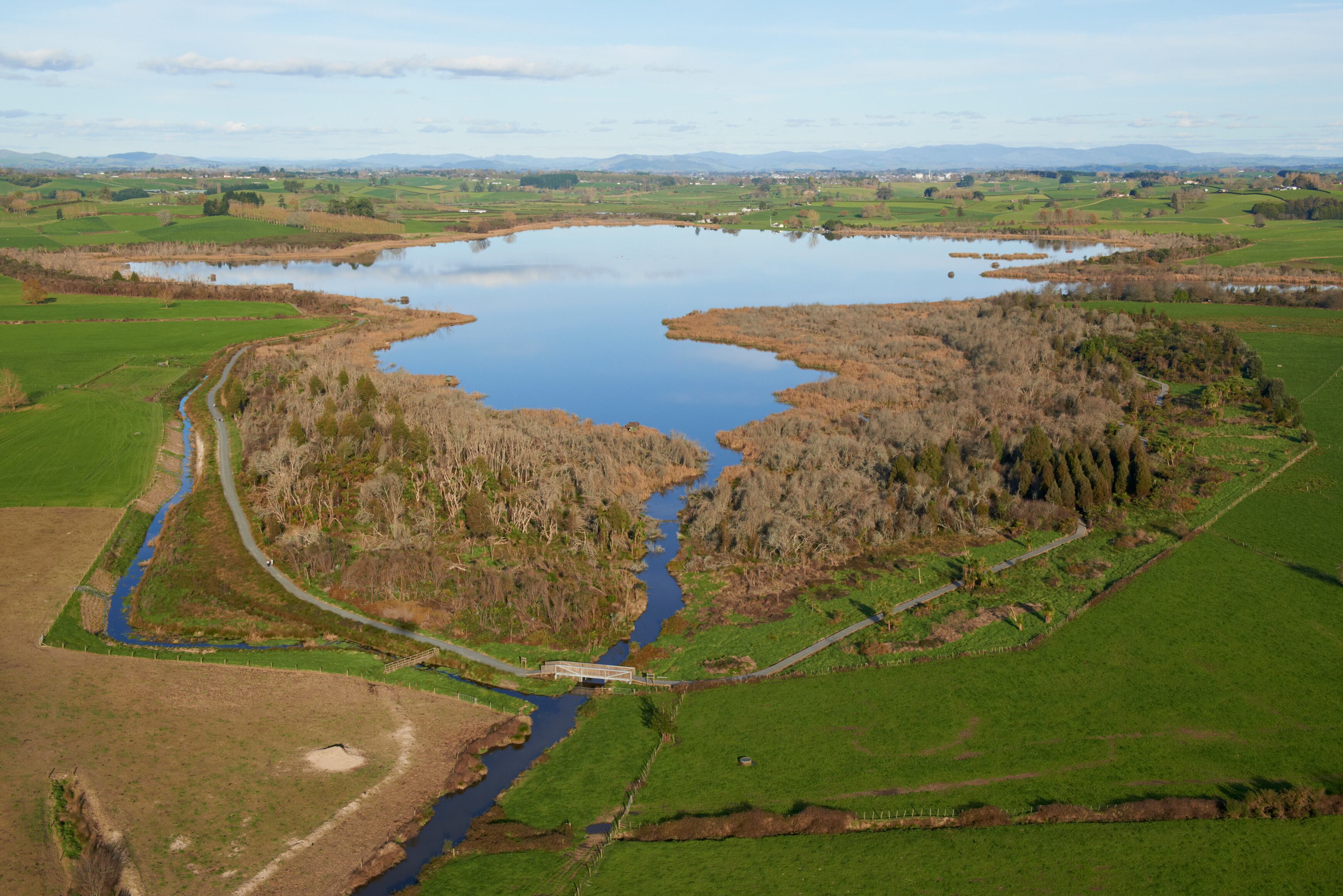
LAKE NGā ROTO RESTORATION PLAN, PEST CONTROL UNDER REVIEW
The future of Lake Ngā Roto, one of Waikato’s largest peat lakes and a popular recreation spot near Te Awamutu, is under review.
The focus of the Lake Ngā Roto Recreation Reserve Management Plan review is on continuing the Lake Ngā Roto restoration programme, including planting and pest and weed control.
It would also set the long-term direction for the development and management of the lake.
The review of the plan, which was last updated in 2009, was initiated by Waipā District Council and mana whenua representatives from Ngāti Apakura and Ngāti Hikairo.
Waipa District Council community services manager Brad Ward said they were in the preliminary stages of reviewing the plan and were eager to hear the public’s suggestions.
“This is an opportunity to help shape how we look after this tino taonga [invaluable] natural resource for future generations.”
The reserve was used by people for a variety of different reasons and its walking and cycling tracks were used by 44,689 people last year.
It was also used for freedom camping and by clubs and individuals for rowing, sailing, fishing, and duck shooting.
The lake and its surrounding land hold significant value to mana whenua and encompass the site of Hingakākā, New Zealand’s largest inter-tribal battle.
Ngā Roto is the site of the pā Taurangamirumiru, while there were also three floating pā on the lake where about 200 people resided.
The updated plan would guide the future management of the reserve by incorporating the views of Ngāti Apakura and Ngāti Hikairo and other users.
It would also take into account the district’s growing population and a possible name change to the mana whenua preferred name for the lake and the reserve.
While mana whenua have not announced their preferred name, in the conversations between the council and Ngāti Apakura, they have referred to the lake as Wairoto.
The council also decided to include the 114 Bank Rd property at the southern end of the lake, which was purchased in 2018, the paper roads surrounding the recreation reserve land adjoining Lake Ngā Roto and any future land acquired to improve the health of Lake Ngā Roto in the new plan.
When funding becomes available, the intention is to retire the land from grazing and revegetate it to improve the quality of water entering the lake and provide habitat for indigenous wildlife.
Despite ongoing restoration efforts, water quality and ecological conditions have continued to deteriorate due to the long-term impacts of historic drainage, vegetation clearance, and nutrient loading.
“Restoration of the lake is a long-term game. This plan won’t be a quick fix, but it will be a vehicle to bring key parties together,” Ward said.
A focus group has been established to provide guidance and feedback, ensuring the plan aligned with the aspirations and views of the community, mana whenua, and key stakeholders.
Feedback is open to the public and will close at 5pm on July 28.
More details on the plans for this land can be found in the Ngā Roto Biodiversity Assessment and Restoration Plan 2021.
2024-07-03T03:20:42Z dg43tfdfdgfd